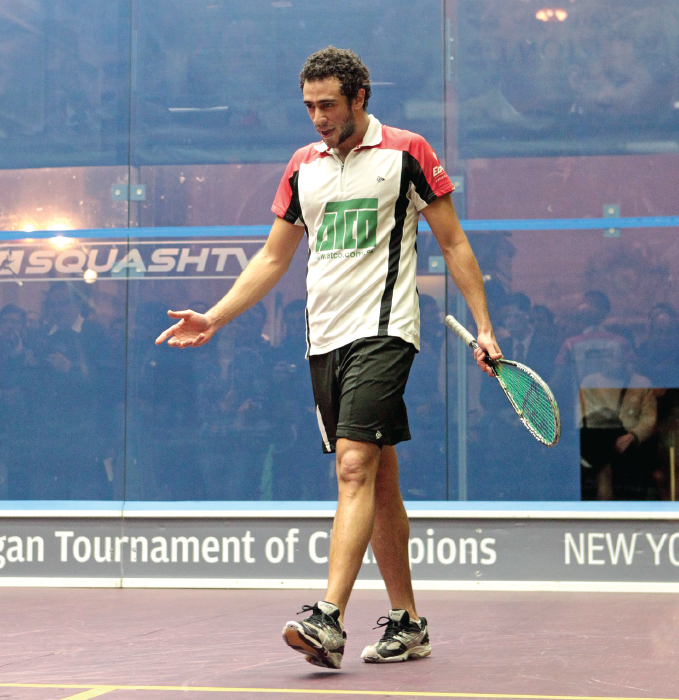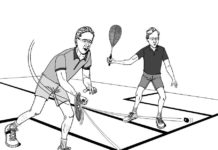By Richard Millman, Owner—Westchester Squash
This month I wanted to give you a simple way of monitoring your progress and development in your game.
Everything in Squash is about managing time (and I mean everything).
How you play, how you think, how you feel will determine whether you end up in the past (behind) , in the present (just keeping up) or in the future (ahead).

To begin with, let’s consider playing the game itself
Where (in time) is the game? The game is always in the present.
What is the physical location of the game? The physical location of the game is the ball.
Wherever the ball is, is where the game is. So the ball is in the present.
Your behavior, relative to the ball will determine whether you end up in the past (behind), in the present (just keeping up) or in the future (ahead). For instance: from the most microscopic (how you hold and control the racket and when you start using your legs to generate movement and force), or the macroscopic (whether you are focusing your attention on the whole rally—big picture— or you are overly absorbed by a single shot—small picture).
You might ask: How can I be in the future? Well, we know that thoughts precede actions. So if you can be physically up to date with the ball (in the present) physically, you must be slightly ahead (in the future) mentally.
So when and how fast you move, or when and how fast you hit the ball, will determine where you are in your on-going relationship with the game (ball).
Now let’s consider your approach to the game
Are you planning your calendar of practices, lessons, games and competitions (future/getting ahead mentality)?
Are you responding to offers of games, lessons and competitions and failing to practice (present/just keeping up mentality)?
Are you ignoring offers of games, lessons competitions, never practicing and playing inconsistently (past/behind mentality).
How about the ways in which you talk to yourself? Do you fear failure (seeing yourself behind)? This often is a result of thinking about winning and losing too much. Winning or losing is a consequence of your behavior, not a method of behavior.
Do you tell yourself that you just enjoy playing (seeing yourself enjoying the moment/living in the present)?
Do you monitor the minutiae of your play and ask yourself how you can progress (seeing yourself make small but vital improvements to get ahead in the future). If you have accepted that how you play is how you play and that it is just a question of how it goes on any given day, then you are going to move backwards.
Finally let’s consider how people talk to you.
Are people telling you to think about your behavior? (“What did you do wrong there, John?”) This simply establishes a past failure in your mind—and puts you behind.
Are people asking you about your behavior? (“What do you think you could have done better there, John?”) This elicits cerebral forward momentum on your part and pushes you toward the future—and moving ahead.
Summary
Imagine a time line. On the far left in the red zone is the past. In the center (along with the ball) in the amber zone is the present. On the far right in the green zone is the future.
Analyze your physical, technical, strategic, organizational and emotional behaviors. Consider the counsel you receive from others. Which pieces of the puzzle are in which of the zones? If you add up all the greens, ambers and reds you will see where you are and where you need to go.
In the future
I hope to produce a graphic with specific Red Amber and Green Zones in the near future—look out for this development tool in a future issue.





